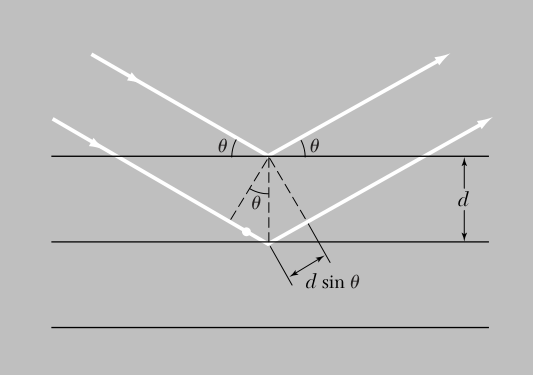Reciprocal lattice
Let’s start from studying the simple case of a 1D crystal whose atoms are arranged in a line at a distance
Let’s now introduce a function
If we write the Fourier expansion of
It is easy to show that due to the periodicity of
So if we have a periodic function its Fourier expansion can be written only for certain values of
3D case
This can be generalized in 3 dimensions as follows:
with
Similarly to before, the Fourier series can be written as
with
Similarly to the demonstration above we can write
If
the last exponential becomes
Again, the sum is not on every possible
Finding a base
It can be useful to define a base
We now need to find
If we take the particular case in which
we get
which (since
The same can be done for
The vectors
Dimensionally
We can see that there is an inverse proportionality between the lengths of the vectors:
where
Volume of the reciprocal lattice
Given the volume of the direct lattice
Theorem
Given the Miller indices
and
where
Demonstration omitted
X-Ray diffraction
Bragg formulation

In the Bragg formulation the crystal is made by parallel planes and the constructive interference happens only for certain
and thus
Von Laue formulation
In the Von Laue formulation we start by taking two lattice points (in red) and supposing that every atom can irradiate the incident radiation in every direction.
(
We can say that the two wavelengths are equal
and that the two wave vectors are:
In this case the difference in optical path is
And the constructive interference happens when, like before,
So we get
Since the two lattice points are “connected” by
which is the definition (?) of reciprocal lattice
So the Von Laue condition can be written as
A different way to write the same formula, using the fact that
Equivalence of the formulations
To show that the two formulations are equivalent we can start from the second version of the Von Laue formulation (
